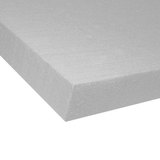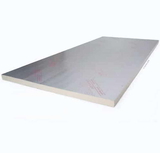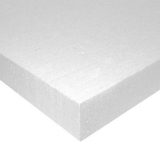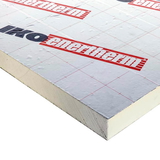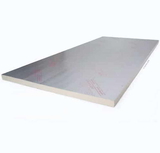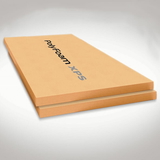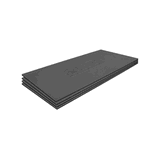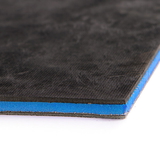- Blogs
- Insulating Concrete Floors: Benefits and How-to Guide
Insulating Concrete Floors: Benefits and How-to Guide

Concrete floors are common in many homes, especially in basements and garages. However, they can also be a source of heat loss, moisture problems, and discomfort. That’s why insulating concrete floors is a smart and effective way to improve your home’s energy efficiency, comfort, and durability.
In this article, we will explain why and how to insulate concrete floors, and what products you can use to achieve the best results.
Why Insulate Concrete Floors?
There are three main benefits of insulating concrete floors: reducing heat loss, preventing moisture damage, and increasing comfort.
Reducing Heat Loss
Concrete is a porous material that allows heat to escape easily. According to the Energy Saving Trust, insulating the floor of an average detached house can save £180 per year on energy bills. Insulating concrete floors can also help reduce your carbon footprint and greenhouse gas emissions.
Preventing Moisture Damage
Concrete floors can also absorb moisture from the ground, leading to mould, mildew, and water damage. This can affect the quality of your indoor air and the health of your family. Insulating concrete floors can help prevent moisture from seeping through, and protect your flooring and furniture from damage.
Concrete floor insulation
Increasing Comfort
Concrete floors can be very cold and hard underfoot, which can make your living space uncomfortable and unwelcoming. Insulating concrete floors can help create a warmer and softer surface, which can improve your comfort and well-being. Insulated concrete floors can also reduce noise transmission and improve acoustics.
How to Insulate Concrete Floors?
There are two main methods of insulating concrete floors: above the slab and below the slab. The method you choose depends on whether you are building a new floor or retrofitting an existing one.
Above the Slab
Insulating above the slab involves laying insulation boards on top of the existing concrete floor, and then covering them with a suitable flooring material. This method is easier and cheaper than insulating below the slab, but it also raises the floor level and reduces the ceiling height. You will also need to consider the impact of the insulation on doors, skirting boards, and pipes.
To insulate above the slab, you will need to follow these steps:
- Clean and dry the concrete floor, and make sure it is level and free of cracks.
- Lay a vapour barrier, such as a 6-millimeter polyethylene sheet, over the concrete floor, and tape the joints and edges. This will prevent moisture from rising up from the ground.
- Lay the insulation boards over the vapour barrier, and cut them to fit the floor area. You can use different types of insulation boards, such as PIR, EPS, or wood fibre, depending on your budget and preference. Some insulation boards come with a vapour barrier already attached, which makes the installation easier.
- Tape the joints and edges of the insulation boards, and fix them to the concrete floor with adhesive or mechanical fixings, according to the manufacturer’s instructions.
- Lay the flooring material over the insulation boards, and secure it with nails, screws, or glue, depending on the type of flooring. You can choose from various flooring options, such as carpet, laminate, vinyl, or tiles, depending on your style and needs.
Some of the products you can use to insulate above the slab are:
- Celotex GA4000 Aluminium-Faced High Performance PIR Insulation Board: This is a high-performance PIR insulation board with an aluminium foil facing on both sides. It has a low thermal conductivity of 0.022 W/mK and a range of thicknesses from 50mm to 100mm. It is suitable for both new and existing concrete floors and can be used with underfloor heating systems.
- Jablite Jabfloor EPS70 Polystyrene Insulation Board: This is a lightweight and cost-effective EPS insulation board with a thermal conductivity of 0.038 W/mK. It comes in various sizes and thicknesses from 25mm to 150mm. It is easy to cut and install and can be used with underfloor heating systems.
- Steico Therm Wood Fibre Insulation Boards: This is a natural and eco-friendly wood fibre insulation board with a thermal conductivity of 0.038 W/mK. It comes in thicknesses from 20mm to 160mm and has a high vapour permeability and moisture resistance. It is ideal for breathable construction and can be used with underfloor heating systems.
Below the Slab
Insulating below the slab involves laying insulation boards under the concrete floor, and then pouring a new layer of concrete over them. This method is more difficult and expensive than insulating above the slab, but it also preserves the floor level and ceiling height. You will also need to consider the structural integrity and load-bearing capacity of the floor.
To insulate below the slab, you will need to follow these steps:
- Remove the existing flooring material, and expose the concrete floor.
- Dig out the concrete floor, and create a trench around the perimeter of the floor area. You will need to dig deep enough to accommodate the insulation boards, the damp-proof membrane, and the new concrete layer.
- Lay a damp-proof membrane, such as a 6-millimeter polyethylene sheet, over the excavated floor, and tape the joints and edges. This will prevent moisture from rising up from the ground.
- Lay the insulation boards over the damp-proof membrane, and cut them to fit the floor area. You can use different types of insulation boards, such as PIR, EPS, or wood fibre, depending on your budget and preference. Some insulation boards come with a damp-proof membrane already attached, which makes the installation easier.
- Tape the joints and edges of the insulation boards, and fix them to the ground with adhesive or mechanical fixings, according to the manufacturer’s instructions.
- Pour a new layer of concrete over the insulation boards, and level it with a trowel. You will need to use a reinforced concrete mix and add steel mesh or fibres to strengthen the concrete. You will also need to leave expansion gaps around the perimeter of the floor and fill them with flexible sealant.
- Lay the flooring material over the new concrete layer, and secure it with nails, screws, or glue, depending on the type of flooring. You can choose from various flooring options, such as carpet, laminate, vinyl, or tiles, depending on your style and needs.
Some of the products you can use to insulate below the slab are:
- Celotex XR4000 Aluminium-Faced High-Performance PIR Insulation Board: This is a high-performance PIR insulation board with an aluminium foil facing on both sides. It has a low thermal conductivity of 0.022 W/mK and a range of thicknesses from 110mm to 200mm. It is suitable for both new and existing concrete floors and can be used with underfloor heating systems.
- Celotex TB4000 Aluminium-Faced High-Performance PIR Insulation Board: This is a high-performance PIR insulation board with an aluminium foil facing on both sides. It has a low thermal conductivity of 0.022 W/mK and a range of thicknesses from 12mm to 40mm. It is suitable for both new and existing concrete floors and can be used with underfloor heating systems.
- ProWarm Insulated Tile Backer Board: This is a lightweight and waterproof tile backer board with a high-density extruded polystyrene core and a glass fibre-reinforced cement coating. It has a thermal conductivity of 0.027 W/mK and a thickness of 10mm. It is ideal for tiling over concrete floors and can be used with underfloor heating systems.
Conclusion
Insulating concrete floors is a worthwhile investment that can improve your home’s energy efficiency, comfort, and durability. Whether you choose to insulate above or below the slab, you will need to use the right products and follow the correct installation procedures.
You can find a wide range of insulation products for concrete floors at Buy Insulation Online, the UK’s leading online supplier of insulation materials. Visit our website today and get the best prices and service for your insulation needs.

Samuel Hitch
Managing Director
Buy Insulation Online.
Leave A Reply
Your feedback is greatly appreciated, please comment on our content below. Your email address will not be published. Required fields are marked *
